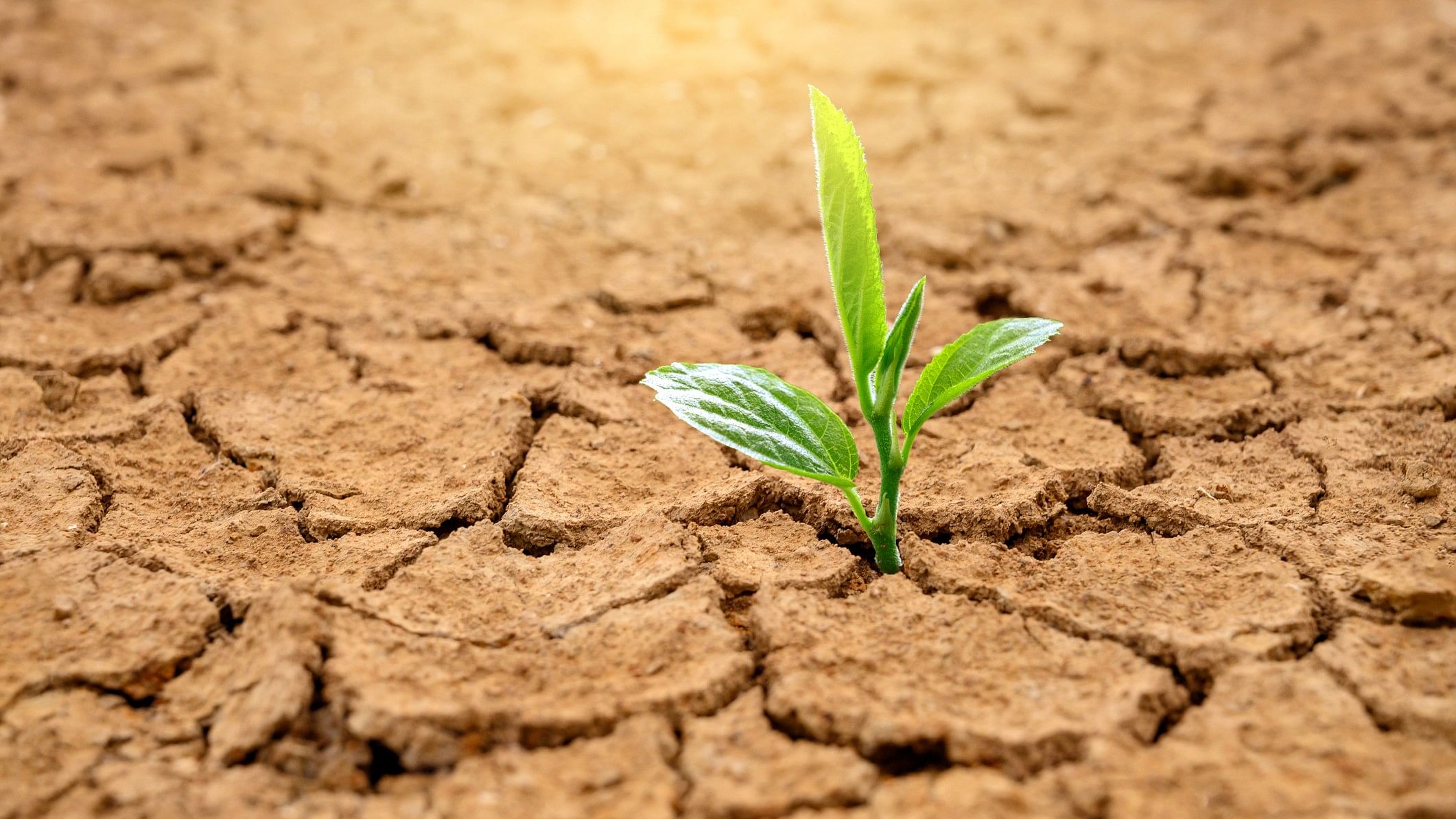
Representative image showing a plant on arid land
Credit: iStock Photo
That water scarcity can kill plants is not news to anyone, but a major phenomenon that leads to this — xylem embolism — is relatively unknown.
Like arteries transport blood from the heart to the rest of the organs in animals, the xylem transports water from the roots to the leaves in plants. This is vital, especially for tall trees, as they rely on their xylem to ferry water from the soil to the canopies. Plants don’t have a heart acting as a pump. The xylem relies on the air's dryness and the leaves’ stomata opening during photosynthesis. This generates a suction pressure that pulls up the water.
"When soil water is plentiful, there’s no problem," says Meghna Krishnadas, an ecologist at the Centre for Cellular and Molecular Biology in Hyderabad. The problem arises during droughts or when it is too hot. "Without enough water in the soil, air gets sucked in instead of water, and bubbles form in the xylem. If large or plentiful enough, bubbles block the vessel. That’s what we call embolism."
An embolism in a xylem vessel can be as disastrous to plants as one in a blood vessel can be to a human. Water supply to the leaves is cut off, and cells cannot function properly without water. This can lead to the closing of the stomata. The plant cannot take in carbon dioxide, which it needs to photosynthesise. No photosynthesis, no growth.
“If the drought is persistent,” adds Jayanti Ray Mukherjee, an ecophysiologist at Azim Premji University in Bengaluru, “the tree's recovery potential reduces, and it becomes prone to diseases and pest attacks.” Studies have shown that xylem embolisms are a primary cause of mortality during drought.
Experts say solutions can come from a collaboration between scientists from different domains, such as ecology and physiology. Rigorous monitoring of trees in an area is necessary to understand how they respond to drought situations.
Ron Sunny, an ecophysiologist at St Joseph's College in Calicut, who has studied the hydraulic traits of trees in the Western Ghats, recalls that he was one of very few looking at xylem vulnerability in the Indian subcontinent. Most of the existing data was from Europe and Amazonia, but those results cannot apply to India as the species composition is different.
Global research into xylem embolism has shown that plants native to drier environments are more resistant. Plants in wet regions, including large trees, may not cope as well with the sudden spate of climate change-driven droughts. At the same time, plants with deeper roots can access deeper water, making them less prone to embolisms than shallow-rooted plants.
With more such data, a country can prepare better for drought situations. Experts say the species’ ability to tolerate dry spells and resistance to xylem embolism should be considered when planting trees for urban greening or restoration.